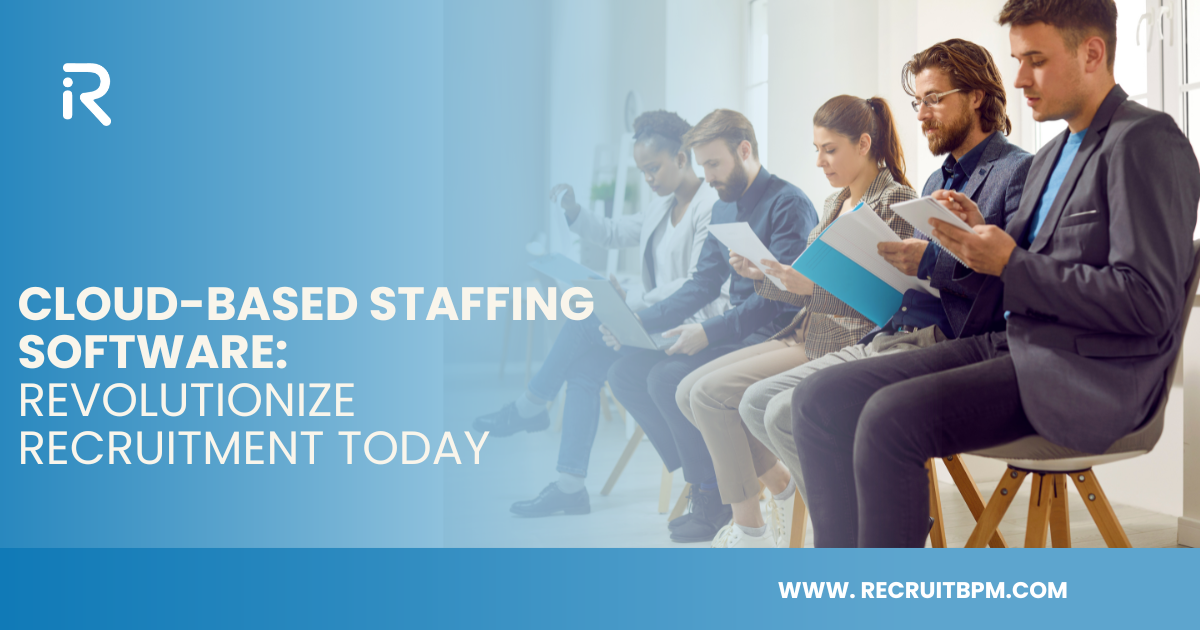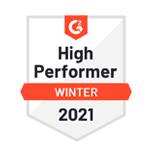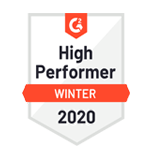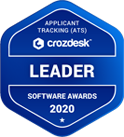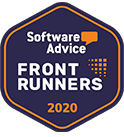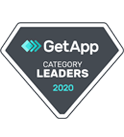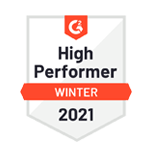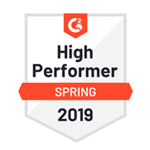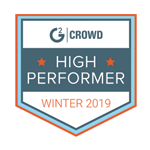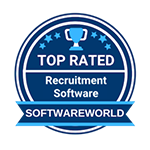The staffing world used to be a mess of sticky notes and endless email chains. Not anymore. Cloud-based staffing software has flipped the script on how agencies find and place talent. It’s fascinating how something that seemed so radical just a few years ago is now the backbone of successful recruitment.
Take Anne Case, talent acquisition manager at Virtelligence in Minnesota. She remembers the headache of juggling multiple systems and drowning in paperwork. “I spent more time updating spreadsheets than talking to candidates,” she says. Now, with the use of cloud-based staffing software, her team handles triple the workload while actually getting home in time for dinner.
The numbers tell an interesting story. According to Deloitte’s 2023 Recruitment Technology Survey, agencies that switched to cloud-based staffing software cut their hiring cycles by 37%. But here’s the surprising part – it wasn’t just about speed. These agencies also reported better candidate matches and higher placement retention rates.
Let’s bust a common myth: many agency owners think cloud solutions are just for the big players with deep pockets. Reality check – small boutique firms are often more agile in adopting these tools. They’re not weighed down by legacy systems or complex approval chains. A local IT staffing firm in Denver grew from three recruiters to fifteen in eighteen months, powered by cloud tools that grew with them.
The best part? No more being chained to your desk. Cloud-based staffing software means checking candidate profiles while waiting for your morning coffee, updating job statuses between meetings, or screening applications during your commute (hopefully not while driving!). It’s like having a super-powered recruitment assistant that never sleeps.
Smart money is moving to the cloud, but not just because it’s trendy. This shift is about survival in a world where the best candidates expect quick responses and smooth experiences. After all, if Amazon can deliver packages in hours, shouldn’t modern recruitment move just as fast?
Why Cloud-Based Staffing Software is Transformative
Scaling a staffing agency used to mean adding more filing cabinets and hiring extra admins to manage paperwork. Pretty wild how things have changed. The use of cloud based staffing software has turned those old headaches into opportunities, especially for smaller agencies trying to compete with industry giants.
Money talks, so let’s start there. Traditional staffing software demanded hefty upfront investments – servers, IT teams, and expensive licenses. Now? A boutique agency in Austin switched to the best cloud based staffing software and cut their tech costs by 40% in the first year. They’re not alone. McKinsey’s 2023 Staffing Technology Report found that small agencies using cloud solutions typically save 25-35% on operational costs compared to those using on-premise systems.
Think of cloud staffing software like a premium gym membership – you only pay for what you use, and all the fancy equipment is maintained for you. Need to add five new recruiters during the busy season? Click. Need to scale back during slower months? Click again. No waste, no hassle.
Here’s something fascinating about accessibility that most people miss: cloud solutions aren’t just about working from home. They’re about catching that perfect candidate before your competitor does. A Minneapolis-based technical recruiter landed a top software developer because she could process the application while at her kid’s soccer game. The competing agency? They waited until Monday morning. Game over.
Small and medium-sized agencies are discovering clever ways to leverage these tools. Take virtual onboarding – the use of cloud based staffing software means smaller firms can now process hundreds of contractors simultaneously, something that used to be exclusively possible for larger agencies. One Florida-based healthcare staffing firm onboarded 200 travel nurses in a single week during a peak demand period. Their secret? Cloud-based automation and documentation.
But let’s bust another myth: the best cloud based staffing software isn’t just about fancy features. It’s about solving real problems. Remember the panic when a crucial file went missing or a computer crashed? Cloud systems automatically back up every piece of data. A power outage, office flood, or coffee spill on your laptop? Log in from another device, and everything’s exactly where you left it.
Security used to be the big concern, right? Times have changed. Modern cloud providers invest millions in security – way more than most staffing agencies could afford for their in-house systems. They employ teams of security experts who monitor threats 24/7. It’s like having a digital Fort Knox protecting your data.
The collaboration aspect is where things get interesting. Different teams can work on the same candidate profile simultaneously – recruiters, account managers, and compliance officers all staying in sync. No more “sorry, that file is locked” messages or conflicting versions of the same document.
Want to know what’s really transformative? Analytics. Cloud systems track everything – time-to-fill metrics, source effectiveness, recruiter performance. But instead of drowning in data, you get actionable insights. One mid-sized agency discovered their best candidates were coming from a source they nearly cut from their budget. That insight alone paid for their annual subscription.
For growing agencies, the choice is becoming clearer: adapt or get left behind. When the best cloud based staffing software can turn a one-person operation into a recruiting powerhouse, the old excuses about cost and complexity just don’t hold up anymore.
Key Industry Trends
The staffing world is riding a wave of innovation that’s reshaping how agencies operate. Recruitment agency software isn’t just getting smarter – it’s fundamentally changing the game. Think AI that predicts candidate success rates before you even schedule an interview. Pretty neat, right?
Remote hiring has exploded, and temporary staffing software is keeping pace. Gone are the days of candidates trudging through traffic for initial screenings. According to the Society for Human Resource Management’s 2023 Technology Impact Report, 67% of successful placements now happen without a single in-person meeting during the initial screening stages.
Here’s a trend that’s turning heads: predictive analytics. Modern recruitment agency software spots patterns humans might miss. One boutique tech staffing firm in Seattle found their best developers were coming from coding bootcamps, not traditional CS programs. Their temporary staffing software flagged this trend, leading them to completely revamp their sourcing strategy.
Automation is doing the heavy lifting with compliance too. Background checks, document verification, and onboarding paperwork – all happening in the background while recruiters focus on building relationships. One mid-sized healthcare staffing agency automated their credential verification process and cut compliance processing time by 60%.
Challenges in Traditional Staffing Software
Legacy staffing systems are like that old flip phone sitting in your drawer – they worked great once, but they’re painfully outdated now. Before staffing software AI came along, agencies struggled with systems that couldn’t keep up with modern recruitment demands.
Remember those dreaded integration headaches? Old systems were like islands – your applicant tracking system wouldn’t talk to your payroll software, and your calendar lived in a completely different universe. One frustrated agency director in Chicago shared how their team used to manually copy-paste data between five different platforms. Talk about a recipe for errors.
Storage limits were another nightmare. A growing staffing firm in Atlanta hit their database ceiling right in the middle of their busiest season. Their legacy system couldn’t handle more than 10,000 candidate profiles – a number that sounds tiny in today’s market. Upgrading meant weeks of downtime and migration headaches.
But here’s the real kicker: maintenance costs. Traditional systems demanded constant IT attention. When Thompson Healthcare Staffing’s server crashed during a major placement drive, they lost two days of work. That incident pushed them to finally embrace modern staffing software AI solutions. Now their system updates automatically, and downtime is practically non-existent.
AI: The Game-Changer in Staffing Software
AI staffing software has become the secret weapon for agencies that seem to magically find perfect candidates while others struggle. The days of keyword matching and gut feelings? They’re making way for something far more sophisticated.
Let’s debunk a common fear right off the bat: staffing software AI isn’t replacing recruiters – it’s giving them superpowers. Take resume screening, for instance. TechCrunch reported that companies using AI-powered screening tools reduced their time-to-shortlist by 75% on average. But here’s what everyone misses: these systems don’t just work faster – they work smarter.
Ever wonder how some agencies consistently place candidates who stick around longer? Smart matching is where the magic happens. Modern AI staffing software analyzes success patterns from thousands of placements. It doesn’t just match skills – it considers cultural fit, career trajectory, and even communication styles. A Boston-based tech staffing firm saw their placement success rate jump from 70% to 89% after implementing AI matching. Their secret? The software spotted subtle patterns in candidate histories that human recruiters typically missed.
But here’s where things get really interesting. Staffing software AI is revolutionizing candidate engagement in ways nobody expected. Imagine having a personal assistant who knows exactly when to reach out to each candidate, what message would resonate best, and which opportunities match their career goals. That’s happening now.
The bias problem in recruiting? AI staffing software is tackling that too, but not in the way most people think. Instead of just hiding demographic information, advanced systems flag potentially biased language in job descriptions and suggest alternatives. They analyze historical placement data to identify and correct hidden biases in the selection process.
Let’s talk efficiency – but not the boring kind. Picture this: while you’re sleeping, your AI staffing software is:
- Scanning thousands of profiles across multiple platforms to identify candidates who might be ready for a career move, based on subtle indicators like profile updates and activity patterns
- Running predictive analytics to forecast which current contractors might need replacement in the next quarter, giving you time to build a talent pipeline
- Automatically adjusting your job post visibility and spend based on real-time market response and competitor activity
Here’s a reality check though: not all staffing software AI is created equal. Some systems promise the moon but deliver barely more than basic automation. The key is looking for solutions that offer:
- Transparent AI decision-making processes that recruiters can understand and fine-tune
- Integration capabilities with existing tools and workflows
- Adaptable learning algorithms that improve based on your agency’s specific placement patterns
- Real-time analytics that explain why certain matches are recommended
And let’s bust another myth: you don’t need a massive budget or data science team to leverage AI effectively. A small healthcare staffing agency in Denver implemented an AI-powered solution and saw results within weeks. Their approach? Start small, focus on one area (they chose candidate matching), and expand based on results.
The future of staffing software AI looks even more promising. We’re seeing early experiments with:
- Predictive success modeling that can forecast a candidate’s likely performance in specific roles
- Natural language processing that can conduct initial screening interviews while maintaining a natural conversation flow
- Market intelligence tools that predict industry-specific hiring trends before they become obvious
Smart agencies are using this technology not just to speed up their processes, but to reimagine them entirely. Instead of sorting through applications, recruiters are spending more time building relationships and making strategic decisions. The AI handles the heavy lifting of matching and screening, while humans focus on what they do best – understanding nuanced client needs and candidate aspirations.
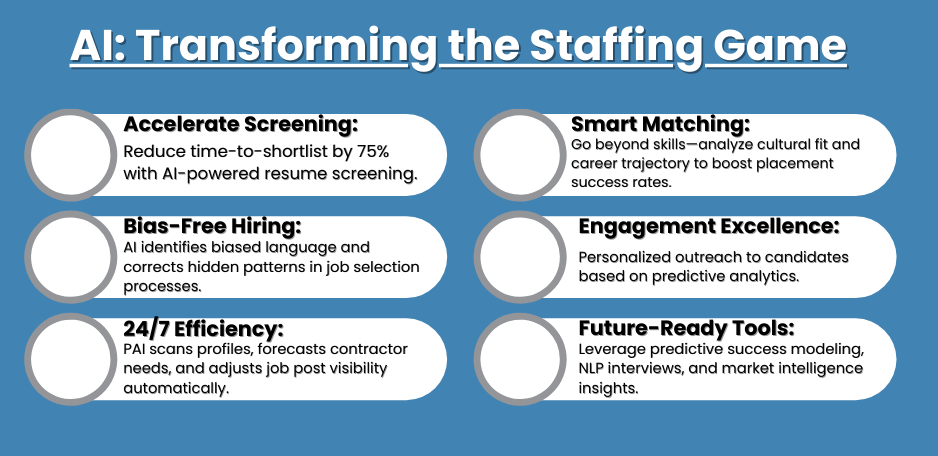
Remember that Boston tech staffing firm? They’re now experimenting with using their AI staffing software to predict which industries will face talent shortages six months in advance. That’s the kind of strategic advantage that transforms good agencies into market leaders.
AI-Powered Talent Matching
Finding the perfect candidate-job match used to be more art than science. Now, with best recruitment software for small agencies, it’s becoming a fascinating blend of both. But let’s skip the marketing hype and look at what really works.
Modern matching algorithms go way beyond the old “keyword matching” approach. Take Riverside Staffing, a three-person tech recruitment shop in Portland. They were skeptical about AI at first – who isn’t? But their new best recruitment software for small agencies started spotting candidate matches they’d normally miss. The system picked up on subtle indicators like project descriptions and career progression patterns that suggested potential fit.
Here’s what makes today’s matching technology different: it learns from success. Every successful placement teaches the system something new about what works. According to a 2023 study in the Journal of Recruitment Technology, AI-powered matching systems showed a 42% improvement in placement success rates compared to traditional methods.
But there’s a catch most vendors won’t tell you about. The best recruitment software for small agencies needs good data to work its magic. Garbage in, garbage out. Smart agencies spend time cleaning up their historical data before letting AI loose on it. They’re careful about how they tag skills and categorize experiences.
The real game-changer? Speed. When a hot job order comes in, these systems can instantly identify and rank suitable candidates from your database. No more frantic searching through old files or hoping you remember that perfect candidate from six months ago.
Think of it like having a really smart assistant who never forgets a resume and notices patterns you might miss. It’s not about replacing recruiter intuition – it’s about enhancing it. The best matches still happen when experienced recruiters use AI insights to make informed decisions.
The technology keeps getting smarter, but it’s the human touch that turns good matches into great placements.
Automation and Chatbots
Gone are the days when recruiters spent hours on repetitive tasks. Modern recruiting software platforms are changing the game with smart automation that actually works. And no, we’re not talking about those annoying chatbots that make you want to throw your phone across the room.
Here’s a reality check: most recruitment tasks follow predictable patterns. Scheduling interviews, sending follow-ups, checking application status – it’s all necessary but time-consuming. Smart recruiting software platforms handle these tasks automatically, but with a human touch. One Denver-based staffing firm automated their initial candidate screenings and saved 23 hours per recruiter per week. That’s like getting an extra part-time employee for free.
The new generation of recruitment chatbots is surprisingly clever. According to Staffing Industry Analysts’ 2023 Technology Impact Report, well-implemented chatbots handle up to 85% of routine candidate queries successfully. But here’s the interesting part – candidates often prefer them for basic interactions. Why? They’re available 24/7 and give instant, consistent responses.
Think of modern automation like a smart executive assistant. It handles the routine stuff while learning your preferences. When a candidate applies, the system automatically:
- Screens their qualifications against job requirements
- Schedules initial assessments if they’re qualified
- Sends personalized rejection notices if they’re not
- Updates all relevant databases and notifications
- Keeps everyone in the loop without manual intervention
But let’s be real – automation isn’t perfect. The best recruiting software platforms know when to hand things over to human recruiters. They recognize complex questions, emotional responses, or unusual situations that need a personal touch.
Unique Features of RecruitBPM’s Cloud-Based Staffing Software
Let’s cut through the typical software marketing fluff and look at what makes RecruitBPM’s solution different in the crowded world of cloud recruitment software. Their platform has some interesting features that caught the attention of many growing agencies.
Think about how frustrating it is when software feels like it’s fighting against your workflow instead of supporting it. RecruitBPM took an interesting approach here. Their best cloud based staffing software adapts to how agencies actually work, not how software developers think they should work. A mid-sized IT staffing firm in Dallas shared how they customized their entire candidate screening workflow without calling tech support once.
The analytics dashboard packs a punch, but in a surprisingly accessible way. Instead of drowning users in endless graphs and charts, it focuses on actionable insights. The system spots trends like which job boards bring the highest quality candidates or which recruiters have the best retention rates. A healthcare staffing agency in Boston used these insights to cut their cost-per-hire by 34% in just three months.
Here’s where RecruitBPM’s cloud recruitment software really shines – their AI implementation. Unlike some competitors who seem to sprinkle AI fairy dust on everything, RecruitBPM’s approach is refreshingly practical. Their matching algorithm, for instance, learns from your successful placements to improve future recommendations. One agency found they were overlooking a valuable candidate demographic until the system highlighted the pattern.
The platform includes some thoughtful features that solve real problems:
- A smart scheduling system that automatically suggests interview times based on everyone’s availability and past scheduling patterns
- Customizable workflows that adapt to different industries and position types, recognizing that placing a software developer is very different from placing a travel nurse
- An integrated compliance tracker that not only monitors certifications but predicts when renewals will be needed and initiates the process automatically
The mobile experience deserves mention. The best cloud based staffing software should work seamlessly on phones and tablets, and RecruitBPM delivers here. Recruiters can manage their entire workflow from their phones without feeling like they’re fighting a shrunken desktop interface.
Integration capabilities are another strong point. RecruitBPM plays nice with other tools – from popular job boards to background check services. The platform even maintains audit trails of data flowing between systems, which is a huge plus for agencies dealing with compliance requirements.
However, let’s address the elephant in the room – reporting. While RecruitBPM’s cloud recruitment software offers extensive reporting options, there’s a learning curve to creating custom reports. The good news? Their standard reports cover most common needs, and they provide templates for industry-specific reporting requirements.
The vendor’s approach to updates and improvements stands out too. Instead of forcing massive changes that disrupt workflows, they roll out improvements gradually, with plenty of time for users to adapt. They actually listen to user feedback – a concept that seems revolutionary in the software world.
Data security is robust without being cumbersome. The platform employs bank-grade encryption and role-based access controls, but users don’t need a PhD in cybersecurity to manage permissions. A staffing firm handling sensitive healthcare placements mentioned this as a key factor in their decision to switch to RecruitBPM.
Price-wise, they’ve taken an interesting approach. While not the cheapest option, their best cloud based staffing software pricing scales with usage, making it accessible for smaller agencies while providing the power larger firms need. They don’t lock essential features behind premium tiers – a refreshing change from industry norms.
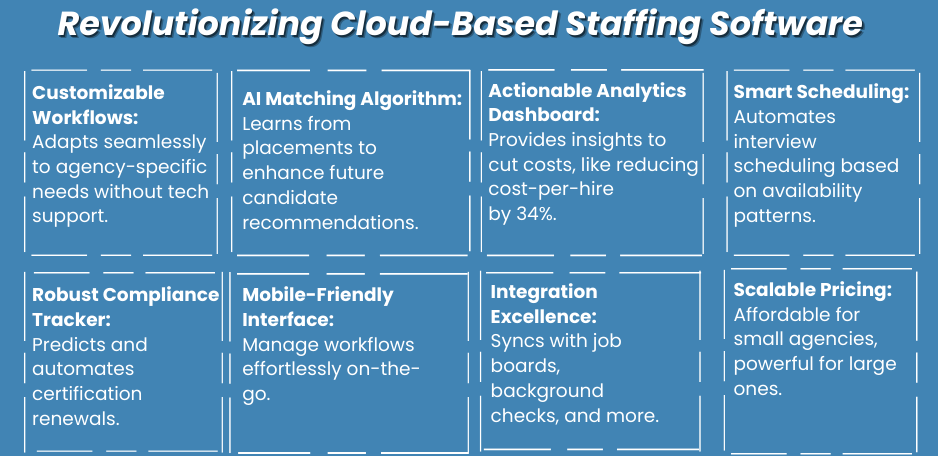
The platform isn’t perfect – no software is. But RecruitBPM seems to understand what staffing agencies actually need versus what looks good in a demo. They focus on making recruiters more effective rather than just automating everything in sight.
Analytics & Reporting
Modern cloud-based staffing software turns mountains of recruitment data into actionable insights. But here’s what’s really interesting – it’s not just about having more data, it’s about having the right data at the right time.
Gone are the days of downloading spreadsheets and spending hours creating pivot tables. Today’s analytics tools serve up insights in real-time. One boutique staffing firm discovered their best candidates were getting snatched up within 48 hours of becoming active. Without real-time tracking, they would have missed this crucial timing pattern.
The Harvard Business Review recently published a case study showing that agencies using advanced analytics in their cloud-based staffing software improved their placement rates by 35% on average. But here’s the surprising part – the biggest gains came from relatively simple insights, like identifying the best times to contact candidates or spotting early warning signs of candidate drop-off.
Smart dashboards now track everything that matters: time-to-fill metrics, source effectiveness, recruiter performance, and candidate engagement rates. But they do it intelligently – highlighting exceptions and trends that need attention while filtering out the noise.
Think of it like having a really smart business analyst working 24/7, spotting patterns and flagging opportunities. Which job boards deliver the highest quality candidates? When do most candidates drop out of your process? Which recruiters have the best retention rates? The answers are there, presented in clear, actionable formats.
Customization Options
Modern staffing software AI isn’t one-size-fits-all anymore. The best platforms understand that placing IT contractors needs a different approach than staffing healthcare professionals. It’s about building workflows that match how agencies actually work.
Think of recruitment agency software like a digital Swiss Army knife – the core tool is the same, but how you use it changes based on your needs. A tech staffing agency in Seattle customized their candidate assessment workflow to automatically include coding tests, while a healthcare staffing firm modified theirs to track medical certifications and license renewals.
Here’s what makes today’s customization truly powerful: it doesn’t require a computer science degree. One small manufacturing staffing firm completely rebuilt their screening process in an afternoon. Their secret? Drag-and-drop workflow builders and intuitive field customization tools.
The real magic happens when staffing software AI learns from these customizations. Each agency’s unique workflow teaches the system what works in their specific market. A logistics staffing firm discovered their custom screening questions were actually predicting long-term placement success – something they wouldn’t have known without smart analytics.
But here’s a pro tip from agencies who’ve done it right: start with the essentials and build up. Don’t try to customize everything at once. Begin with the workflows that impact your bottom line most, then expand based on real needs, not theoretical ones.
Real-World Applications and Success Stories
Let’s look at how real agencies are transforming their operations with best recruitment software for small agencies. These aren’t just success stories – they’re blueprints for what’s possible with the right tools.
Take MNI Operations, a small staffing firm that faced a common challenge: too many manual processes eating up valuable time. After implementing RecruitBPM’s cloud recruitment software, they saw dramatic changes. Their recruiters went from spending hours on data entry to focusing on what really matters – building relationships with candidates and clients. The results? They doubled their placement rate within six months while actually reducing overtime hours.
Fidelity Bank of Minnesota tells an interesting story about modernizing their hiring process. Banking recruitment has unique compliance requirements that can slow everything down. Their old system meant shuffling papers between departments and endless email chains. After switching to RecruitBPM’s platform, they cut their time-to-hire by 40%. But here’s the surprising part – they also saw improved candidate quality because recruiters had more time for thorough screenings.
A particularly telling case is Growth Innovative Solutions. They were struggling with scattered data across multiple platforms – a nightmare scenario many small agencies know too well. The best recruitment software for small agencies unified their entire recruitment process. Their team now manages everything from one dashboard, leading to:
- A 50% reduction in administrative tasks, freeing up recruiters to focus on building relationships with top candidates
- Better candidate matching through AI-powered screening that learns from each successful placement
- Improved client satisfaction due to faster response times and more precise candidate matches
One aspect these success stories share is the smooth transition. Each organization worried about disrupting their existing workflows. Instead, they found that modern cloud recruitment software adapted to their processes rather than forcing them to change everything overnight.
Here’s a fascinating detail from MNI Operations’ experience: their recruiters discovered patterns in their successful placements that they hadn’t noticed before. The software’s analytics revealed that candidates from certain professional development programs had significantly higher success rates. This insight helped them refine their sourcing strategy and improve placement quality.
Fidelity Bank’s story highlights another crucial point: scalability. As their hiring needs fluctuated, the software scaled seamlessly. During peak hiring periods, they handled three times their normal volume without adding staff or experiencing system slowdowns.
Growth Innovative Solutions found an unexpected benefit – improved candidate experience. Their automated but personalized communication system kept candidates engaged throughout the process. The result? A 30% increase in candidate acceptance rates.
These aren’t just isolated success stories. They represent a pattern of transformation that’s possible when agencies embrace modern recruitment technology. The key isn’t just having powerful tools – it’s about using them strategically to solve real business challenges.
How to Choose the Right Cloud-Based Staffing Software
Picking the right recruiting software platforms can feel like navigating a maze. Let’s cut through the confusion and focus on what really matters for your agency’s success.
Start with your core needs. Before diving into fancy features, list your daily pain points. A boutique agency in Chicago wasted time evaluating high-end enterprise solutions before realizing they needed best cloud based staffing software that excelled at the basics: candidate tracking, email integration, and simple reporting.
Here’s a practical evaluation checklist that successful agencies use:
Core Functionality:
- Does it handle your current volume with room for growth? One agency chose a platform that looked perfect but hit performance issues at just 50 users
- How well does it integrate with your existing tools? A healthcare staffing firm had to switch platforms after discovering their chosen software couldn’t connect with their background check service
- Is the mobile experience actually usable, or just a cramped version of the desktop interface?
Cost Considerations:
- Watch out for hidden fees. Some recruiting software platforms advertise low base prices but charge extra for essential features
- Look for transparent pricing that scales with your business
- Consider implementation and training costs – they can sometimes exceed the software cost
The security aspect is crucial but often overlooked. Your best cloud based staffing software should offer:
- Role-based access controls that are easy to manage
- Regular security updates and data backups
- Clear data ownership policies
Here’s a smart approach: ask for a pilot program. Many vendors offer 30-day trials, but push for a small-scale implementation with real data. A Denver-based tech staffing firm discovered major workflow issues during their pilot that weren’t apparent in the demo.
Don’t forget about support. The best software becomes useless without proper backing. Check:
- Support hours and response times
- Training resources and documentation
- User community size and activity
The right choice often isn’t the most expensive or feature-rich option – it’s the one that best fits your specific workflow and growth plans.
Key Evaluation Metrics
Before diving into flashy features, let’s focus on what really determines success with staffing software AI. Smart agencies look beyond the sales pitch to evaluate what matters.
Cost-effectiveness isn’t just about the monthly fee. A Texas staffing firm learned this the hard way when “hidden” costs like per-user fees and integration charges doubled their expected budget. Look at the total cost of ownership, including training, maintenance, and any required add-ons.
Scalability means more than handling more users. Your system should scale in three directions:
- User count without performance drops
- Data volume while maintaining speed
- Feature complexity as your needs grow
The staffing software AI capabilities need careful evaluation. One mid-sized agency discovered their new system’s “AI matching” was just basic keyword filtering. Real AI should learn from your placements and improve over time.
Support quality makes or breaks implementation. Check response times during your time zone, not just business hours. Look for robust documentation, training resources, and an active user community. A healthcare staffing agency praised their vendor’s weekend support when they hit a critical issue during a major placement drive.
Questions to Ask Vendors
When evaluating recruitment agency software, asking the right questions separates the real solutions from the fancy sales pitches. Here’s what experienced agencies wish they’d asked sooner.
Start with implementation: “How long is your typical setup time, and what’s included in implementation support?” One agency discovered too late that ‘implementation support’ meant a few video tutorials and an FAQ page. Ask about data migration too – will they help move your existing records?
Get specific about customization: “Can we modify workflows without involving your technical team?” Some vendors say yes but actually require expensive consulting hours for basic changes. One staffing firm spent three months waiting for simple form customizations.
Dig into the AI claims: “How does your recruitment agency software learn from our agency’s specific placement patterns?” Many systems promise AI but deliver basic automation. Ask for concrete examples of how their AI improves over time.
Don’t forget about growth: “What happens when we need to add new offices or divisions?” A growing healthcare staffing firm had to switch platforms because their chosen software couldn’t handle multi-location operations.
The best vendors welcome tough questions and provide clear, specific answers – not vague promises or marketing speak. If they dodge questions about security, scalability, or support, that’s a red flag.
Actionable Tips for Maximizing ROI with RecruitBPM
Getting the most from your best cloud based staffing software isn’t just about features – it’s about smart implementation. Let’s look at strategies that actually work in the real world.
Start with data cleanup. One staffing firm spent two weeks organizing their existing data before migration and saved countless hours of post-implementation headaches. Clean data means your cloud recruitment software can start delivering value from day one.
Train in stages, not all at once. A successful IT staffing agency used this three-phase approach:
- Core functions first: basic navigation, candidate tracking, and essential daily tasks
- Advanced features next: custom workflows and automation tools
- Analytics and reporting last: once everyone’s comfortable with the basics
Here’s a clever trick from a high-performing agency: they assigned “power users” for different features. These team members became internal experts who could help others, reducing dependence on vendor support. Their recruiters mastered the system twice as fast as expected.
Smart agencies customize their dashboards early. A healthcare staffing firm configured role-specific views for their recruiters, account managers, and compliance team. Each group saw exactly what they needed, nothing more. This simple step cut training time by 30%.
Want to maximize your ROI? Focus on these often-overlooked features:
- Email templates that learn from response rates
- Automated follow-up sequences that maintain candidate engagement
- Custom reporting dashboards that track your most important metrics
One surprising success factor: regular system audits. Monthly reviews of workflow efficiency, automation rules, and user adoption patterns help identify opportunities for improvement. A manufacturing staffing agency found they were only using 60% of their automation capabilities – tweaking their setup led to a 25% efficiency boost.
Pro tip: Use RecruitBPM’s built-in analytics to track your progress. Monitor key metrics like:
- Time-to-fill trends
- Source effectiveness
- Recruiter productivity
- Candidate engagement rates
The key to success isn’t using all the features – it’s using the right features in the right way for your specific needs.
Final Thoughts
Cloud-based staffing software has moved from being a nice-to-have to a must-have tool for modern recruitment agencies. But here’s what makes today’s landscape different: it’s not just about moving to the cloud – it’s about choosing solutions that actually drive results.
RecruitBPM’s recruitment agency software stands out in meaningful ways. Think streamlined workflows, smart AI that learns from your successes, and analytics that help you make better decisions. The platform grows with your agency, whether you’re placing dozens or thousands of candidates.
Let’s be clear about what matters: agencies using modern recruitment platforms aren’t just saving time – they’re transforming how they work. Remember that healthcare staffing firm that cut their placement time in half? Or the IT recruiter who tripled their successful matches? These aren’t outliers – they’re examples of what’s possible with the right tools and implementation.
The recruitment landscape keeps evolving. Candidates expect faster responses, clients demand better matches, and agencies need to do more with less. Smart agencies aren’t asking if they should upgrade their technology – they’re asking when and how.
Ready to see how RecruitBPM can transform your agency? Schedule a personalized demo today. Our team will:
- Walkthrough your specific challenges
- Show you relevant features in action
- Help you understand the implementation process
- Answer all your questions about customization and scaling
Take that first step toward modernizing your recruitment process. Visit RecruitBPM.com to book your demo with a solutions consultant. Your competitors are already evolving – isn’t it time you did too?
The future of staffing is here. Are you ready to be part of it?
FAQs
How long does it take to implement cloud-based staffing software?
Typical implementation takes 2-4 weeks, depending on your data volume and customization needs. RecruitBPM provides a dedicated implementation specialist to ensure smooth transition.
Can I migrate data from my existing system?
Yes, RecruitBPM’s recruitment agency software includes robust data migration tools that support imports from most major platforms. They handle everything from candidate records to historical placement data.
What kind of training and support do you provide?
Support includes live training sessions, on-demand video tutorials, 24/7 chat support, and a comprehensive knowledge base. Every client gets a dedicated success manager for the first 90 days.
How secure is my data in the cloud?
RecruitBPM uses bank-grade encryption, regular security audits, and automated backups. They maintain SOC 2 compliance and follow industry best practices for data protection.
Can I customize the software for my specific industry?
Yes, RecruitBPM offers extensive customization options. You can modify workflows, create custom fields, and build industry-specific screening processes without coding knowledge.
What’s the pricing structure?
Pricing scales based on user count and features needed. Plans start at $X per user monthly, with volume discounts available. Unlike some competitors, all essential features are included in the base price.
How does the AI matching actually work?
The system learns from your successful placements, analyzing patterns in skills, experience, and cultural fit. It goes beyond keyword matching to understand career trajectories and soft skills that lead to successful placements.
Can I try before buying?
RecruitBPM offers a full-featured 14-day trial with your actual data, plus a money-back guarantee for the first 30 days after purchase.


